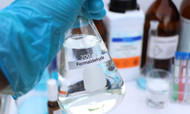Formaldehyde Detection: The Photoelectric Photometry Method
Posted by William Kimmell on 25th Aug 2023
Formaldehyde is a colorless gas at room temperature. Manufacturers use formaldehyde to create medicines, cosmetics, and many other consumer products.
Formaldehyde is a carcinogen and can cause a wide range of adverse health effects. Due to the risks of short- and long-term exposure, formaldehyde detection is a priority for workplace safety. Learn more about formaldehyde detection and the photoelectric photometry method to understand this accurate and efficient monitoring technique.
The Risks of Formaldehyde Exposure
Various sources release formaldehyde, including plywood, particleboard, paints, and tobacco smoke. Formaldehyde is also a byproduct of combustion in emissions from unvented fuel-burning appliances, like gas stoves.
Short-term exposure to elevated levels of formaldehyde can irritate the skin, eyes, nose, and throat. Higher levels of exposure can cause myeloid leukemia, nasopharyngeal cancers, and other types of cancer.
How Photoelectric Photometry Works
Photoelectric photometry measures the intensity of light absorbed by a sample at a specific wavelength. First, place a colorimetric tablet into the detector. Next, pump an air sample from the test environment onto the tablet for 15 to 30 minutes.
The presence of formaldehyde will cause the tablet to darken or stain. If the tablet does not change, there is no formaldehyde in the air sample.
The darker the stain, the more formaldehyde there is in the air. The detector’s optical sensor reads the stain darkness and calculates the formaldehyde concentration.
Advantages of Photoelectric Photometry in Formaldehyde Detection
Photoelectric photometry is a highly sensitive method capable of detecting low concentrations of formaldehyde gas. These detectors are simple to use and provide rapid results, making them suitable for routine monitoring. There are no known interfering gases that could produce false readings.
Use reliable detectors in your facility to remain compliant. Per OSHA, the legal airborne permissible exposure limit (PEL) of formaldehyde is 0.75 ppm averaged over a 9-hour work shift; 2 ppm may not be exceeded over a 15-minute work period.
The photoelectric photometry method’s reliability, sensitivity, and simplicity make it a valuable tool for formaldehyde detection. TG Technical Services offers easy-to-use formaldehyde detectors that support a safe workplace. Shop with us today for essential gas monitoring equipment.

